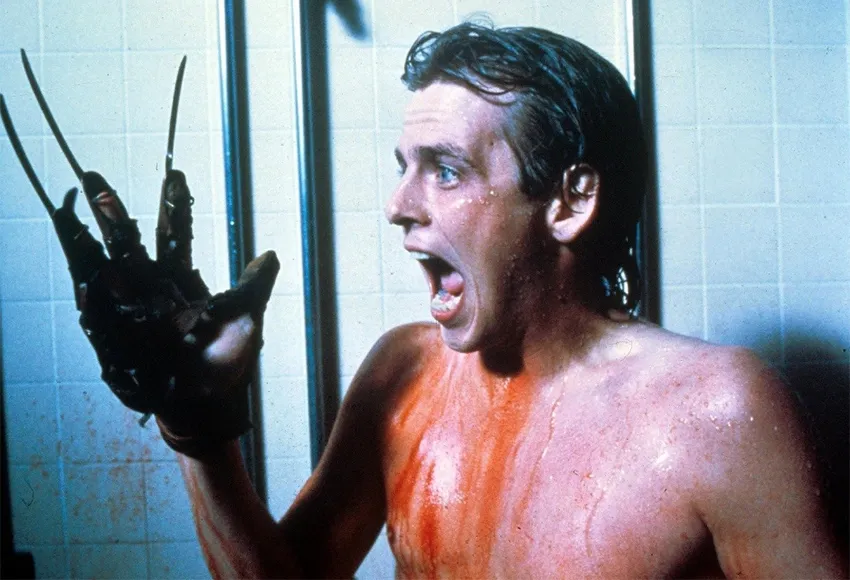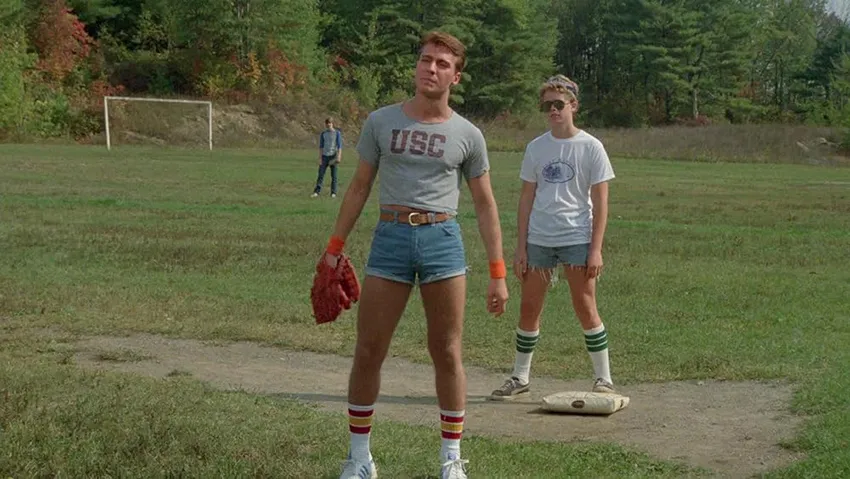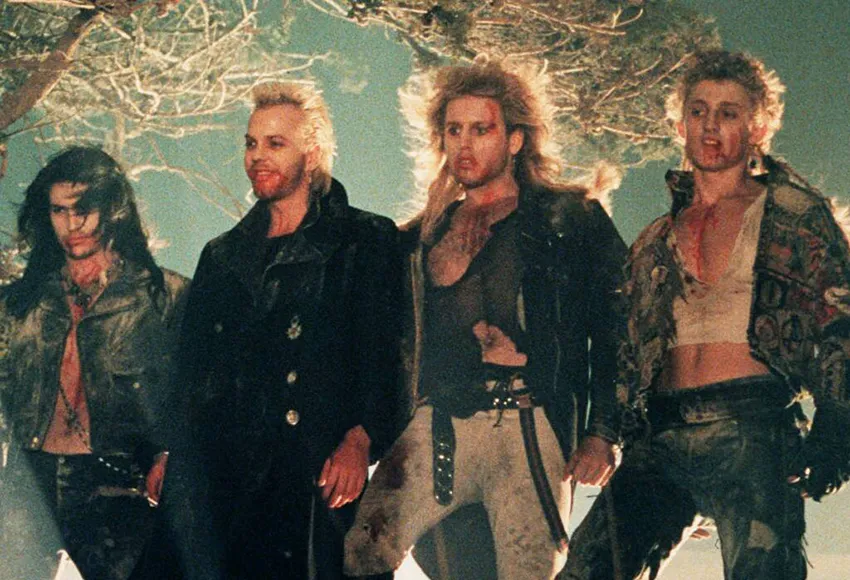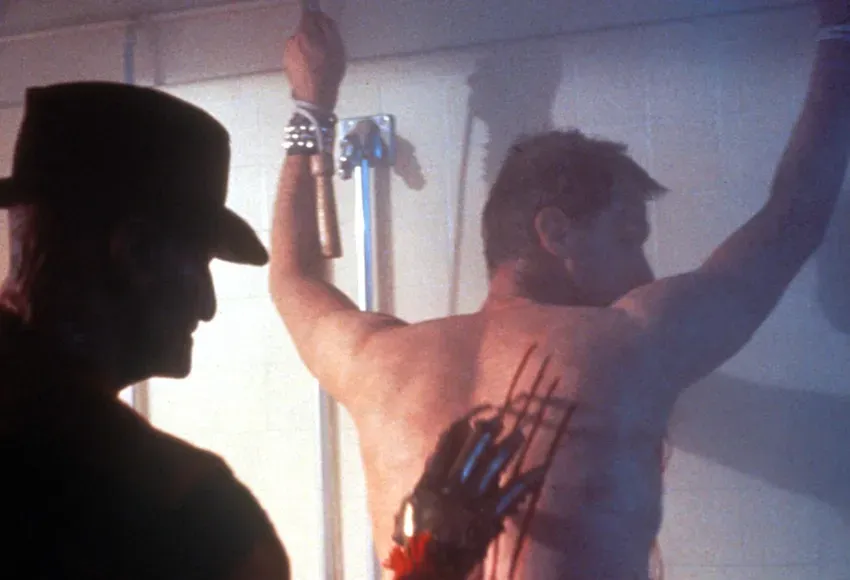This article is a continuation of my Halloween miniseries, which started in the last edition of the SGN. That article looked at the Golden Age of cinema, specifically within the horror genre, specifically James Whale, one of the most prolific and successful directors of his time. Whale also happened to be an openly Gay man, creating some of the first cinematic Queer art of all time. We examined how his identity informed his works, narratively, aesthetically, and through the means of production.
In this week's installment, we are going to be looking at a couple of movies (and their productions) from the '80s. Once again, we will be discussing these films through a LGBTQ+ lens, illuminating how queerness influenced these classic works.
Yabba dabba...it's the '80s
The 1980s were an incredibly challenging and grim time for the Queer community. The increase in visibility, due to changing times, political successes, and the AIDS crisis, led to a Gay panic, which influenced works at the time. This was compounded by the horrible handling of said crisis, making the decade for many Queer people a real-life horror film. AIDS was in fact sometimes used as a backdrop to horror, as in the novel It.
These two forces – increased visibility and increased dehumanization at the hands of the government – came together in the 1980s to form a decade with both more LGBTQ+ representation than ever before and some of the most exploitative and offensive examples put to screen.
Exclusion of Queer narratives and characters was par for course before, but this decade ushered in an era of increased inclusivity at the expense of Queer trauma being used for cheap scares. It was quite common to see LGBTQ+ people be murdered, or punished for their otherness.
Moreover, these characters were often portrayed as debaucherous or sinful through the lens of the film. In some cases, the very fact that a character is Queer is used as grounds to justify that they are a murderer. This trope originates in many ways from 1960's Psycho, in which the killer is revealed to be a mentally disturbed person who dresses up as his dead mother (who he deludedly believes to be speaking to him) and murders people. The cross-dressing and his speaking to his dead mother both are portrayed as sick delusions that would qualify someone as mentally unstable.

Nightmare on Elm Street 2: Freddy's Revenge
Nightmare on Elm Street 2: Freddy's Revenge (1985) has long been analyzed for the hidden messaging pointing to allegories and representations of queerness. There are many examples throughout, including the subversion of the "final girl" trope: the main character is a teenage boy, and it is he who ends up as the sole survivor, a role typically saved for the most innocent girl character.
This subversion – paired with scenes of the high school coach at a Gay bar, and the main character Jesse anxiously getting out of bed with a girl who wants to sleep with him, and later having hot wax poured over his shirtless body – all point to this subtext. Moreover, there is a sexual tension on display between Jesse and Freddie.
As mentioned, this movie has long been examined for its subtext, and at first it was denied by the writer and director. In the years since, though, both have retracted those statements. One acknowledged the subtext, but said that it was unintentional. The other later claimed that he intentionally wrote the film with such subtext to highlight the reality of AIDS, the Gay panic, and the experience of young men with repressed sexual desire.
Mark Patton, who played Jesse, was closeted during filming, and worried that the movie's subtext could lead to him being typecast as a Gay actor. He has since embraced its cultural impact among the community, and even produced a documentary on the subject, titled Scream, Queen!: My Nightmare on Elm Street.

Sleepaway Camp
Sleepaway Camp is a 1983 slasher, considered a classic of the genre and debuting at the height of the genre's popularity. It has been long been loved by some in the LGBTQ+ community due to its camp and fashion, which are geared toward the Queer gaze. Muscular men in extremely tight clothing were not necessarily everyone's cup of tea at the time, and this sent a message to particular group of Queer people.
The film's more enduring legacy, though, comes with the reveal at the end. In the final few moments, it is revealed that the little girl was born male, as she stands naked, exposing her genitalia. It is not specified if she is truly a Trans girl, or if she was forced to live life as a girl, but either way, it is beside the point. The reveal portrays to the audience that this child's queerness is the reason they have committed murders; whether is was the source of their mental instability or the result, it is the reason they carry out evil.
This could be seen as just a shocking reveal (and it is worth mentioning that not all Queer people or even Trans people think this movie is fully problematic), designed to leave the audience questioning the viewing experience as they leave the theater. But given the context of LGBTQ+ history at the time, specifically the panic around Queer people, it served to confirm the horrible stereotypes of Trans people perpetuated by stories like these.
Horror is unique in its ability to shape people's opinions of identities they have no experience with. So those who do not know any Trans people access their only frame of reference (images in the media) to make judgment calls that inevitably affect the lives of Trans people.

The Lost Boys
Another horror film from the '80s with Queer subtext is the 1987 Joel Schumacher flick The Lost Boys. This is an example of a story with no overt Queer characters; however, it makes up for that with themes, aesthetics, and of course, the man behind the camera. Schumacher was an openly Gay man who directed many popular movies.
He is also no stranger to injecting Queer sensibilities (such as camp) into his movies. Schumacher's foray into superhero filmmaking resulted in 1997's Batman & Robin, which is so Gay, it presents itself as a kaleidoscopic joyride with the most over-the-top performances. In addition to that, Batman and Robin's suits were given nipples.
It is with the same Queer brush that Schumacher paints The Lost Boys. Beyond the style given to the titular boys being very specifically coded (leather aesthetics and piercings have a prominent place in Queer subculture), the story presents many opportunities for Queer-focused readings.
For instance, the main character is initially enticed to join the lost boys when he is seen fawning over a girl. This is his introduction to the group, but eventually it is revealed that the girl was used as bait to entrap him into an initiation, which then is only complete once his transformation happens through the death of the girl – meaning he kills his heterosexual urges to become a lost boy.
The film does not stop there, though, as in one scene, the main character's becoming a vampire is treated by his brother as something to hide from their mom. This is an extremely unsubtle nod to the way someone's queerness might be reacted to by a family member.
Schumacher was hired at the last minute to replace the original director, who, it has been reported, was going to be ground the movie much more in horror; Schumacher supposedly made the executive decision to lean more into camp and absurdity, playing with conventions to create celebrated, iconic Queer cinema.
In closing
As I mentioned is the last edition, queerness has been integral to horror films since their inception, either through auteurs who themselves belonged to the community and added their own perspective to the long history of LGBTQ+-made films, or through Queer bodies and stories being used (either respectfully or not) for their authenticity, style, and experiences.
The 1980s were a momentous time for the history of the community, when the conversation around LGBTQ+ issues changed forever, as did our place in popular culture. This cultural shift brought with it an impressive offering of art concerning Queer people, for worse sometimes, and for better other times.
In the next edition, I will conclude my examination of horror film history and the queerness surrounding the people, the narratives, and the aesthetics of these productions. We will dive into modern horror (mid-late 2010s to the 2020s) for a dissection of how representation has changed and examination of what horror movies today say about the LGBTQ+ community, as well as how the latter continues to push the art form forward and represent itself.


